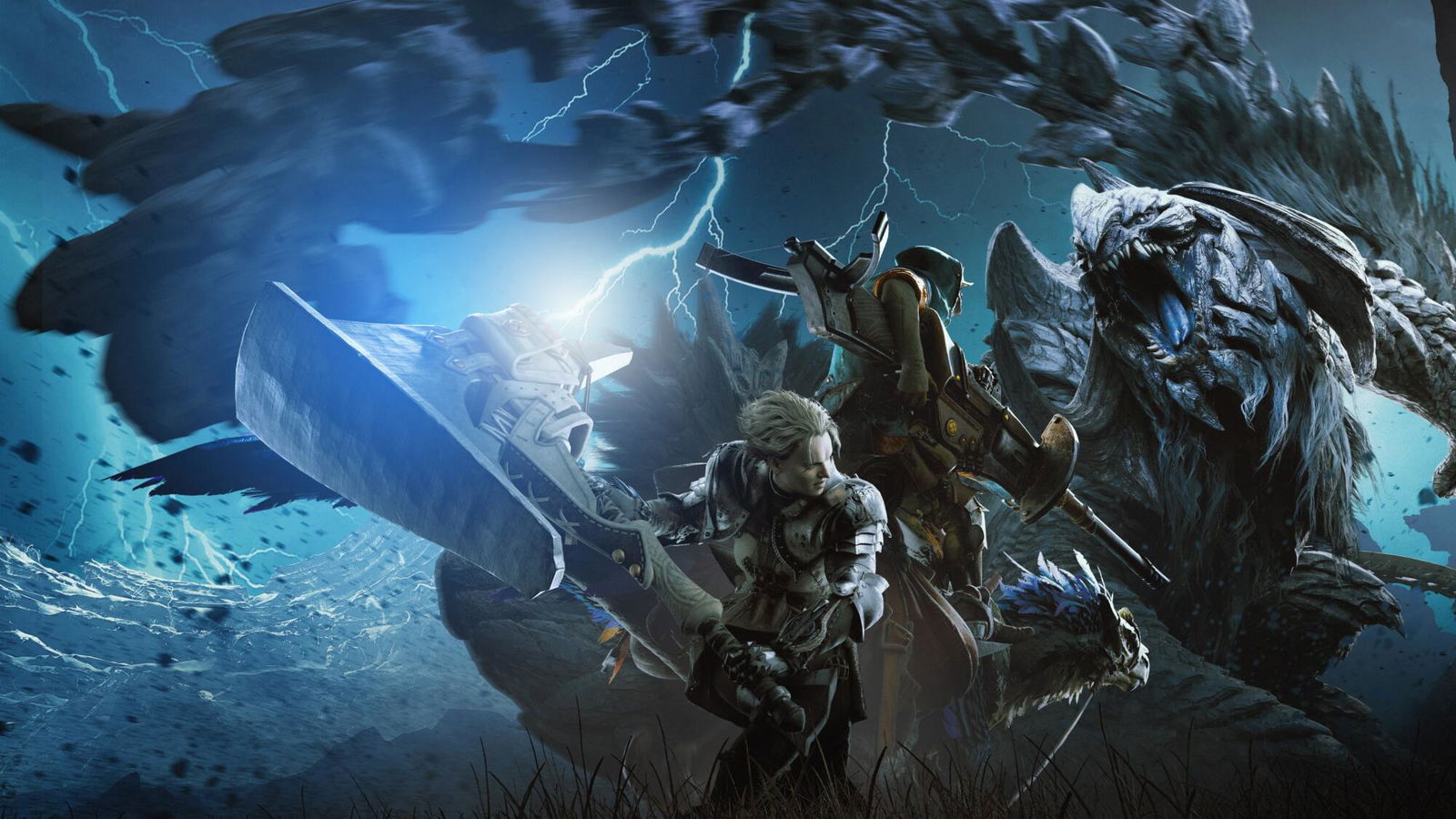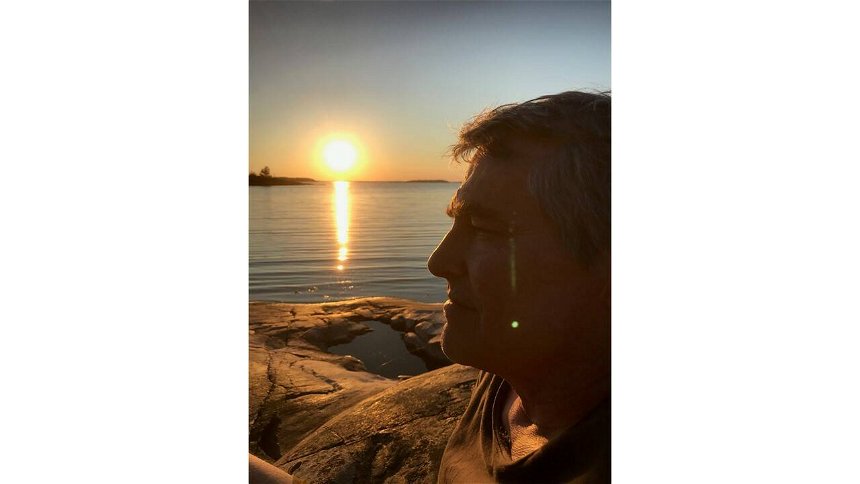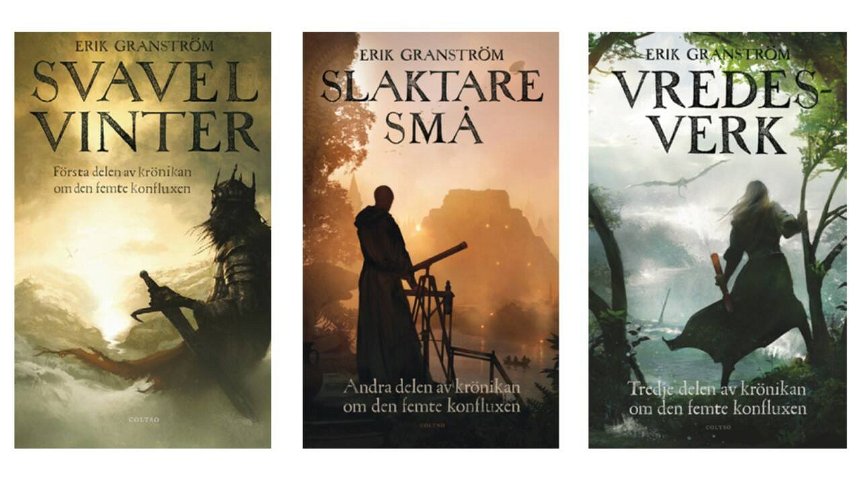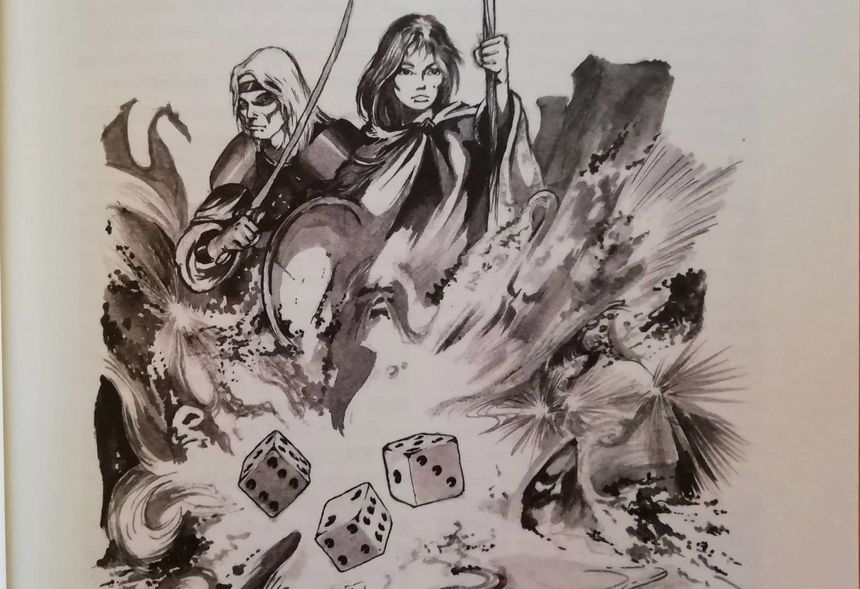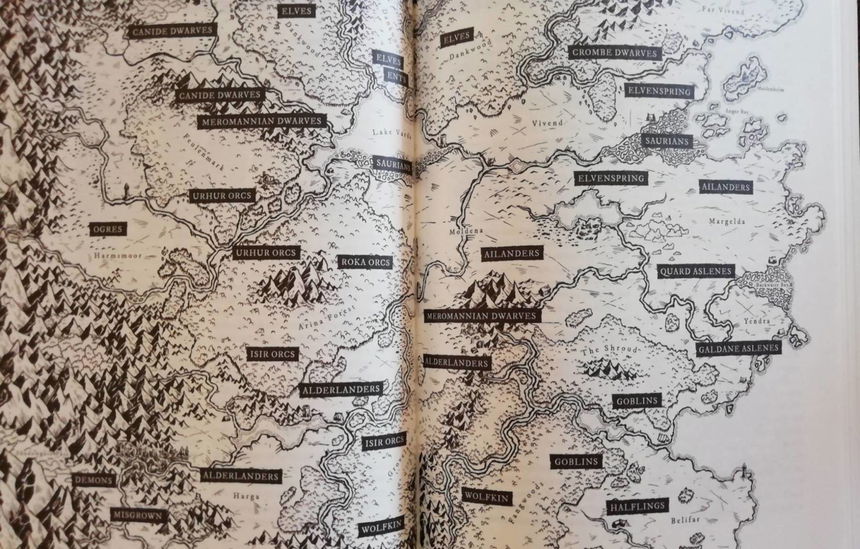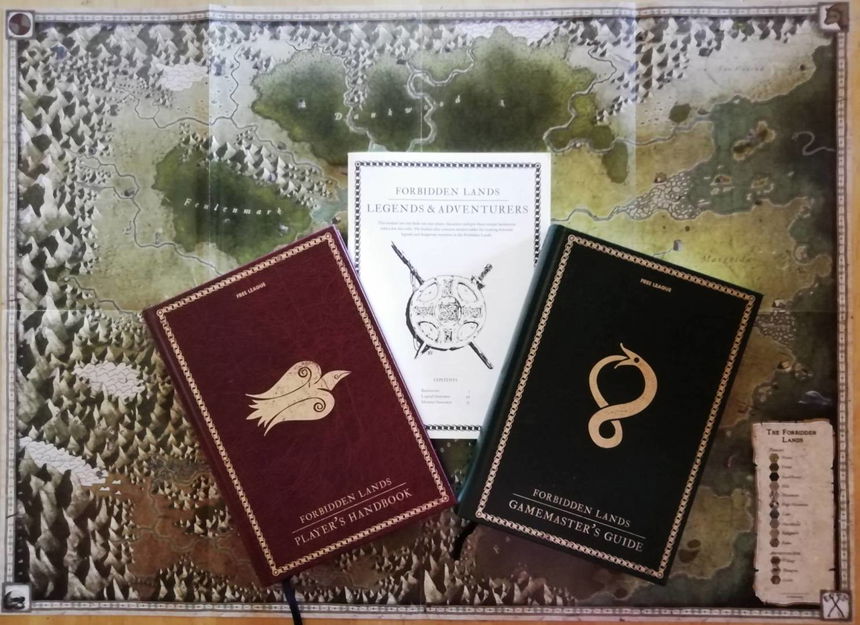In last days, we have had the privilege of being able to interview Erik Granström, an established Swedish fantasy novelist who has also created numerous settings for roleplaying games, including Free League Publishing's Forbidden Lands, in our opinion one of the best fantasy "pen & paper" RPGs born in recent years.
Forbidden Lands is an RPG that aims to offer the playful experience of the old school, enriched by a series of new and interesting mechanics. In Forbidden Lands, players will not play the role of indomitable and valiant heroes but rather those of scoundrels and raiders who will have to do everything to survive in a cursed world. Erik Granström was so kind to tell us what the inspirations and motivations behind the creation of this world were and also to give some advice for those who want to try their hand at creating their own game worlds.
The interview to Erik Granström
Hi Erik, thank you for your time. We know that in Sweden you are an acclaimed writer of fantasy novels and that you also have a prolific career in the world of RPGs.Tell us a little more about yourself: when did you approach the world of roleplaying games? When did you start writing for roleplaying games and what prompted you to become involved in games creation?
I started playing Dungeons and Dragons already in 1976 or so, when it was quite a new thing. A friend brought it over from the US, and I was immediately hooked. After playing a year I made my own setting and became a dungeon master. Some time later, as RPG:s became very popular in Sweden, I used my material to write a series of adventures for the biggest game. The first of these adventures was titled ”Svavelvinter” (winter of sulphur”). That series became sort of a classic that is still played in Sweden. Since I already had published a novel at the time, it was natural for me to use the RPG setting for a literary project that eventually became four books totalling 2300 pages, the first titled Svavelvinter. Free League, the publishers of Forbidden Lands, then based their very first game on these novels, a game also called Svavelvinter. After that, Svavelvinter reappeared a fourth time as a death metal band. Me and the singer Christian Älvestam made an album where I wrote the lyrics with motives from the setting. You can find it on Spotify if you're curious.Privately I'm a jack of all trades. I'm trained as a veterinarian, but have also worked in marketing and in the computer company MySQL. Since 2009 I spend my time writing fiction and game stuff, also for computer games.
Tell us something about your career as a novelist too, unfortunately it is not possible to find your books in Italy, are they available in English? What are they about?
I published my first novel already in 1980, and has written ever since. I'm very interested in history and philosophy. My fantasy novel series is set in a polyteistic renaissance world, mostly based on Italy in the days of the Medici's and Borgia's, as well as on the Roman republic with religion borrowed from the Sumerians of Mesopotamia.The Fifth Conflux, which is the name of the series, is dark and allegorical high fantasy with considerable humor thrown in. I like to explore existential, historical and contemporary themes, which I actually found quite possible to do in a fantasy saga.
I hope the books someday will be translated into English, but so far they're only available in Swedish and Danish.
Let's focus now on Forbidden Lands, how did this project come about?
Forbidden Lands was initiated as a Kickstarter stretchgoal for an art book featuring the illustrations of Nils Gulliksson, the best known illustrator of the classic Swedish RPG. This art book was produced by Free League, and one of the stretchgoal promised a classical fantasy RPG built on Gullikssons art.When the project was to be realized, I was commissioned, no doubt as another relic since I was around in Gullikssons days, to write the Forbidden Lands setting and the Raven's Purge campaign. There were some basic instructions about the games' focus, but basically I was given free hands to shape the Forbidden Lands world, provided I used Gullikssons existing illustrations, which appear in the game. Forbidden Lands wanted me to capture the old school feeling but do something new with it. I was immensely thrilled to reshape established concepts of elves, orchs and dwarves, and especially enjoyed bringing down the intolerably jolly halflings. ;-)
The rules of the game were not around at the time, but I've always been more interested in the story anyway.
We found the setting of Forbidden Lands really fascinating, with an "old school" and at the same time modern flavor, moving away from the classic High Fantasy genre while using some of its stylistic features. Since you are the author and we have the opportunity, we would like to ask you: what is Forbidden Lands?
The Forbidden lands is Ravenland, a place devastated by desperate power struggles and religious fanatism. Sounds familiar? Well, it should be, since I draw a lot of inspiration from current and historical processes. There's that all too common land dispute, where humans arrive to a land owned by elves and dwarves, are given part of it and soon wonder why they really shouldn't take it all, leading to war and extermination. There's the religious bickering about whether the raven or the snake is the true god, leading to war, persecution and extermination. And, finally, there's the desperate appeal to mighty allies, who arrive and do their thing, but then decide to stay and ruin what's left. At this point the Blood mist rises, covering the land as a deadly, cold blanket for three hundred years. When the game starts, the mist has just lifted and you, a band of tattered adventurers and rogues, say: “Hey, let's go out and see what's left if Ravenland!”How did the setting of Forbidden Lands come about? What were the sources of inspiration that led you to its creation?
Well, in the beginning, the world was formless and empty, darkness was over the surface of the paper, and Nils Gulliksson's spirit was hovering over the keyboard. Then, a light touch and there was conflict, and I saw that the conflict was inspiring and I separated the different world views from each other and one side said ”We're right” and the others said ”No, we're right!”My main sources of inspiration are always history and human behaviour. Partly this has to do with me being somewhat uninterested in the good vs evil aspect. I much more like to understand the incentives of different parties, which makes conflict more understandable and interesting, where everybody thinks they're the good guys. To my surprise, this made the orchs one of the more sympathetic kins of the game.
For the horse riders of Aslene, I needed more hands-on inspiration, since I didn't want to picture them as huns or Dothraki scantily clad hunks or western pulp indians. So for the Aslenes I went to the historical Scythians and Parthians of the asian steppes, that haven't been exploited as often.
What were the biggest challenges you faced in developing Forbidden Lands’ setting?
The biggest challenge was getting away from the fantasy cliches, while still having to rely on them. I really enjoyed that. There's actually a big advantage in there being so many fantasy cliches, since they consist a well-known and common ground with the players, that can then be twisted without too much explanation. It's much easier to do parody when the audience knows the “real” thing. The second thing for any author is of course to make the things you enjoy also amuse others. I'm a big fan of curious details.We found the choices you made in the unusual portrayal of two kins, elves and halflings, which are usually portrayed in an extremely positive way, particularly interesting. What prompted you to make this choice?
Again, I don't like good vs bad, so there had to be more to these kins.With the elves, I tried to picture how an immortal being would see things, and I wouldn't think of them as necessarily noble, but rather as ”why would we care about meaty things that die and rot within a mere two centuries in the first place”. This could easily result in indifference or fascistoid feelings of inherent superiority. I think I got more inspiration for elves from ”Interview with the Vampire” than from Tolkien. Also I was relieved when I realized that even if a being has lived for several thousand years, it doesn't have to remember much of it, especially if it doesn't care much about the passing of time at all and soon gets the feeing of ”seen that, been there, done that!” Their days would blend with each other, as for someone living in an institution.
Concerning the halflings, I from start concluded that their jolliness must be a facade, and then though: OK, so what's really going on behind the curtains here? They must be afraid of the truth obviously, so there's shame and dark secrets. Then I got the idea that goblins are the halflings' dark relatives, the mr Hydes of an entire kin, and the rest sort of rolled along by itself.
We know that you are also the author of Raven's Purge, the first campaign released for Forbidden Lands. It is a decidedly non-linear story, open to numerous possible final situations. Was its creation complex? Are there substantial differences in developing a campaign of this type, rather than a classic one in which the narrative is usually closer to that of a novel?
Very interesting challenge. The basic components in the campaign are the adventure sites. The specifications for these, apart from having a given format, were that you should be able to place them anywhere on the map and play them in any order. Ideally you should also be able to solve each in many different ways, including by violence, by diplomacy or by being smart. You should be able to side with different parties. I also wanted them to be varied: one focusing on horror, one on solving social situations, one on fighting, one on puzzles etc.It's very different to writing a novel, where you control every aspect. It's not easier, but different. As a game constructor, I'm mostly responsible for messing things up, not for sorting them out, which I'm often grateful for.
Most RPGs players at one time or another try to create their own game world, often with disappointing results. What advice can you give to those who are about to take on the role of the creator of worlds? What elements are essential to make an interesting setting?
You want immersion for the players and for that you need credability. You will of course still place a lot of fantastic things, but they need to be consistent once the basic premises are laid down. It's fine to say that mountains are made from cheese, but then you need to consider how this would play with everything else.Incentives and conflicts to me are the core means to raise interest for a setting. These conflicts should not be solvable through a single stroke like in Lord of the Rings, nor should it, in my opinion, be clear who are the good guys and who are the bad ones. Players should be able to understand and identify with different sides, while not necessarily sympathizing.
Also, you shouldn't railroad too much, but focus om how to immerse the players in tricky situations that they have to solve.
For inspiration I recommend looking at anything EXCEPT main stream fantasy. There are usable ideas everywhere. For instance I just worked with an artist on a sort of war elefant that is actually a grotesquely enlarged cat ear mite that I've seen as a veterinarian. They look really disgusting in a microscope. The confluxes of my old setting – critical points in space and time, when the gods reboot the world – are related to releasing version X.0 of any software.
History, though is my major inspiration. Dig anywhere, and you will find endless depth to explore. I've found it useful to create cultures by blending unrelated ones from history. For instance, I made one culture by combining ancient Sumerians, Mayans and Pakistan sources. Stay away from the exploited ones, like traditional vikings or highland scots (with all respect to current scots).
For geography I often use fascinating places from all over the world and tweak them, and again use microscopical vistas.
In recent years, a lot of successful RPGs have come from Sweden (not that there weren't any before, I still remember when Kult came out). What do you think is the reason for this success?
RPGs were extremely popular in Sweden during the 1980-1990ies. I often meet old RPG gamers all over the place: doctors, plumbers, members of parliament, police, professors etc. The teenagers have now grown up and support new RPG projects out of nostalgia and some also construct new ones.Do you have any other Forbidden Lands projects in the works? If so, will these products further develop the story and the setting?
Yes, I currently write an expansion for Forbidden Lands, into Aslene, the land west of Ravenland. It will definitely develop both story and the setting, while also expanding on what has already been said. One thing I like in the game, and this somehow grew on its own, is that the world history as it has been presented so far simply isn't entirely true. It's been told from a perspective by people who want history that way. Were the orchs really created as slaves to the elves and dwarves as payment for these kins ceding land to the humans, or were the orchs actually enslaved? What really happened when the raven god carried a snake in its claws, leading the humans to Ravenland? The expansion will reveal sharp twists in these back stories with serious repercussions in the game world.Any other projects related to the world of roleplaying games?
Not currently. I was in a stretch goal for a swedish sf-game, but it wasn't financed. I'm also writing a novel, where the Roman Republic is a current super power, active in my home town in Sweden.Thanks again Erik for your time and your friendliness
My pleasure!Do you want to play Forbidden Lands but don't you know were to buy it? At Amazon you can find the physical version of the game, while on DriveThruRPG you can find the digital version one!

